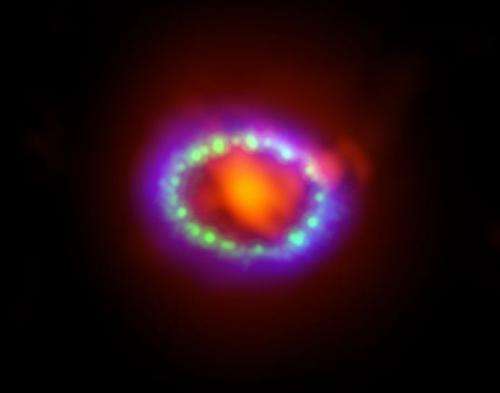A supernova event signifies the end of a star’s life, leaving this universe with a bang. Not only do they leave clouds of gases and elements lying around for the next solar system to use, but they also emit gusts of cosmic radiation, which, according to a new study, may have had a profound effect on the biology of our planet in the past.
Researchers from the University of Kansas (KU) built computer models, based on research published in April of this year in Nature, of two supernovae that exploded only 300 light years from Earth. According to their study published in The Astrophysical Journal Letters (pre-print here), the cosmic radiation had an extreme effect on the creatures on Earth at the time as well as its atmosphere.
“They [the researchers who published their work in Nature] gave us information on when and how far away these supernovae were,” says Adrian Melott, a professor in the Department of Physics and Astronomy at KU. “We used those numbers to do our computer modeling.”
The two stars exploded roughly 1.7 to 3.2 million and 6.5 to 8.7 million years ago, possibly glowing brightly enough to disrupt sleeping patterns in the animals for weeks. This was not the problem though; the problem was radiation. The animals living on land or in shallow ocean would have been exposed to the equivalent of one CT scan per year.
“Our estimate would be a small increase in cancer rates and mutation rates,” says Melott. “It would probably affect large animals and it would be more noticeable.”
High energy cosmic rays can be very destructive, but normally the carnage of ripping electrons off atoms only happens at high altitudes. The excess of these cosmic particles could have increased the amount of muons that reach the Earth by 20-fold.
Muons are similar to the electron, but they have about 1837 times its mass. Most of the time they pass straight through the body and contribute to about ⅙ of the overall radiation we receive. But back when the supernovas exploded, if the influx of muons increased 20 fold, the normal radiation dosage would have tripled. Even though the cancer and mutation rates would have increased, it could also have sped up evolution says Melott.
The next thing Melott and his team want to look at are the climate change implications of the increase in cosmic rays especially in the geological and biological data. In this research it can be shown that cosmic rays can ionize the lower level of the atmosphere, the Troposphere, by eight times more than normal.
“There might have been a big increase in the rate of lightning and that could possibly affect climate,” says Melott. “We want to do some looking at data to see if there was any evidence we can find in the geology or biology for the kind of effects you might get from radiation.”
It is also speculated that the distance of the supernovas was a lot closer at only 163 light years which would drastically change their models. Only time and more data will tell how these supernovas could have shaped life as we know it.










